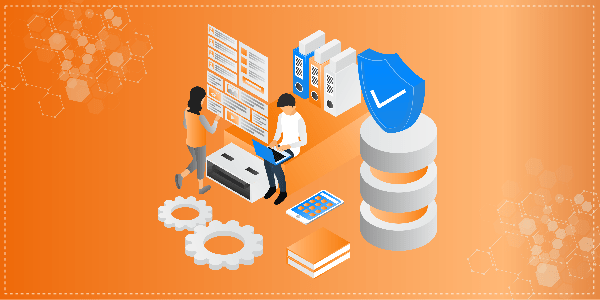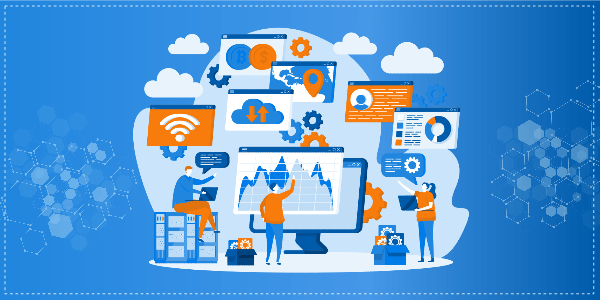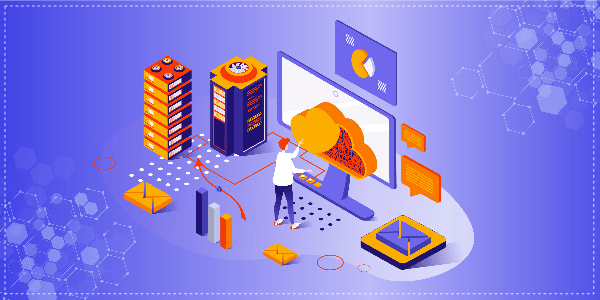
The journey to Data Modernization - Where should organizations Start?
Of late, organizations began to realize and emphasize data-driven approaches. As a result, businesses shifted their focus towards gleaning meaningful insights from their enormous data repositories. However, as modern technology landscapes evolved, they drove the need to reshape and restructure the existing ways of working. With regard to drawing actionable insights from data sources, organizations too had to revamp themselves functionally and technically.
What is Data Modernization?
In simple parlance, Data Modernization refers to moving the siloed data stored in legacy databases to modern cloud-based databases.
For instance, Decision Minds suggest Snowflake, a highly advanced and robust cloud analytics software, which offers a bunch of useful features. In addition, Decision Minds provides services for migration from legacy databases to Snowflake.
What is the need for data modernization?
Before embarking on the journey of data modernization, enterprises must understand and imbibe in them the actual requirement to opt for a data modernization initiative. The deluge of data across people, processes, and systems resulted in the generation of modern data landscapes and advanced analytics for deriving better business outcomes. However, the craving of businesses to harness the potential of these analytics and emerging technologies, in turn, created the need to align the businesses to the modern landscape - the cloud.
Often, despite the digital transformation, most organizations continue with their legacy software. This poses several problems. First, as organizations continue to use the old legacy systems, they suffer from the problem of security. These legacy software might be so outdated that their vendors may no longer support them, and they are devoid of upgrades and patches, rendering them insecure.

Second, outdated software lacks compatibility with the latest technologies. Third and most important, legacy software were designed at the time when neither business processes were so contemporary, nor the importance of data-driven insights was felt. These factors have gradually replaced legacy software with modern cloud-based systems.
In the older versions, data resided on disparate data models and outdated data architectures, which weren't robust enough to bolster emerging technologies and analytics on a large scale. However, the latest software residing on cloud-native environments effectively supports the deployment of modern technologies such as Artificial Intelligence and Machine Learning, along with advanced analytics such as big data. In other words, the causes mentioned in the above paragraph paved the way for the concept of data modernization.
Data modernizations help eliminate the complexities, inadequacies, and inefficiencies revolving around the traditional legacy systems. Besides, modern cloud analytics software offers high-end features including - faster data migration, scalability, optimized storage, good governance, and real-time analytics.
Decision Minds research opines data modernization is in a way synonymous with cloud migration.

How should organizations go about the journey of data modernization?
How to move the data to the cloud-based databases?Should all the legacy data be transferred to the modern databases in one go?
If not, how much, and which data should be retained in old systems?
How should the migration of data across the systems take place?
The core steps for a successful data modernization journey have been crafted based on our research.
Start with the Data Discovery Phase
As a first step towards modernizing the data, organizations fasten up their seat belts for a data discovery phase kick-off. The data discovery stage primarily deals with visualizing data, enhancing data governance, and shifting the priority to deriving data intelligence for value creation.
The data discovery phase involves problem-solving and identifying data-oriented challenges such as implementing data democratization throughout the enterprise with the application of analytics, ensuring increased transparency in business operations and mitigating the risks related to data, adhering to privacy mandates. In addition, data discovery involves classifying and categorizing sensitive and critical data to provide better business outcomes while maintaining the integrity and security of data.
Data discovery involves bringing the team members on board and having open discussions and brainstorming sessions to identify the pain points and plan towards addressing the challenges.


Align on the Strategy and Vision
Once the data discovery phase is complete, organizations must investigate the next stage of aligning their business strategies and vision with data modernization. Though modern technology adoption enhances scalability and productivity, it's integral the focus of the modernization efforts is in line with the business goals and strategies. To derive the true, meaningful outcomes, take a glimpse of your business vision and understand what the organization aims to achieve with the data.
It is important to visualize how the organization and its purposes would use the data. This would clarify the whole idea of data modernization and help understand the functionalities and the results expected from various technological implementations.
Data modernization would find its true meaning and serve as a driver of business results only when there is complete understanding supplemented with the justification of the technology investments.
Think of the people, processes, and data
Data modernization is centered around - people, processes, and of course, the data. With businesses growing, processes also became complex. Besides, processes vary across business functions and industries. Before investing in technology, organizations must clearly define and streamline their processes. Data works around people and processes.
Just as processes need to be fine-tuned, people, the employees need to be trained in those processes. Apart from this, employees, vendors, and customers must be cognizant of the change being planned. Therefore, awareness sessions should be organized to educate the people well in advance so that they are not resistant to the change and are mentally prepared to embrace it.
Finally, there is the third element - data, which is the most crucial and on which the success of the initiative rests. Organizations must initially sort out a strategy on which data and how much data to be moved to the cloud databases. Then, a phased approach must be adopted and planned for migrating the data across the systems. In addition, an appropriate data migration strategy should be formulated with teams well-prepared to execute the steps and prior communication across the organization.


Technology enablement for Data Modernization
Finally, it's time to vet the various feasible technology investments to meet the business requirements and increase ROI in the long run. As mentioned, data modernization involves migrating data from legacy to modern databases. There are numerous cloud analytics service providers in the market, each offering myriad features, and options.
As recommended by Decision Minds, Snowflake is one of the leading and robust cloud analytics services. It offers features of data discovery and reporting through visualizations. In addition, DataHub, a fantastic offering of Decision Minds, supports data modernization by acting as an exclusive tool for Snowflake migration from legacy databases.
Closing thoughts
Organizations must understand the true purpose behind their data modernization initiative. Besides, starting with data discovery, aligning the business vision and strategies, streamlining the people, processes, and data, planning for data migration through a phased approach, and investing in the appropriate technology would help derive the tangible business benefits from data modernization.
Recommended Articles

How is Data Science shaping the future of Modern Data Warehousing?
With evolving technologies and the growing complexity of business requirements, data has become more critical than ever. Data forms the backbone for all business decisions. In the years to come, data science will become a core factor in empowering business users and offering them greater autonomy in work by unleashing the power of modern data warehouses.
Read More

Guide on Digital Experience Platform(DXP) and Associated technologies
A Digital Experience Platform is an all-encompassing tool that helps organizations monitor, analyze, and enhance the digital experience of a customer through their entire lifecycle. It is like a fundamental block using which a company can build, manage, and grow its digital ecosystem.
Read More

How Cloud-based Security is benefitting Data-driven Organizations?
Cloud computing is one of the trendiest new world technologies. It has already hit several milestones and is regularly shaping the way we experience technology in our world. As cloud infrastructure grows, cloud security is also becoming an important part of today’s businesses.
Read More
Contact Us
Decision Minds
Leaders in Cloud Analytics, Multi-Cloud deployments, Business Intelligence and Digital Engineering.
Interested in doing a project with us? We would love to hear from you.
Enquiries: sales@decisionminds.com
Careers: career@decisionminds.com
42840 Christy St, Ste. 112
Fremont, CA 94538,
Phone: (408) 940-5734
Fax: (408) 709-1830, sales@decisionminds.com
1205 BMC Drive, Ste.122,
Cedar Park, TX 78613
Unit No G03, Ground Floor,
C2 Block, Brigade Tech Gardens,
Brookfield, Bengaluru,
Karnataka - 560037

